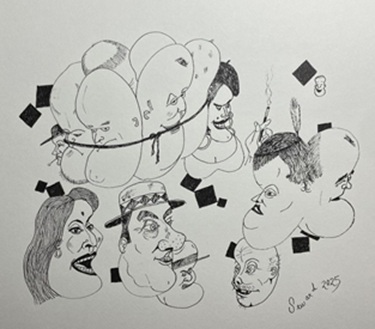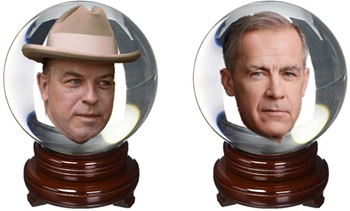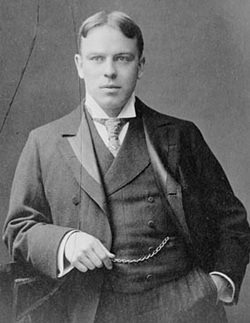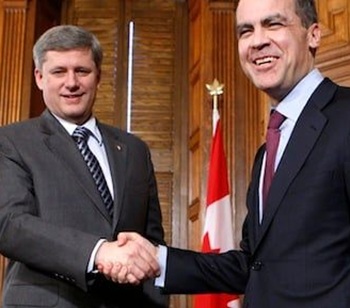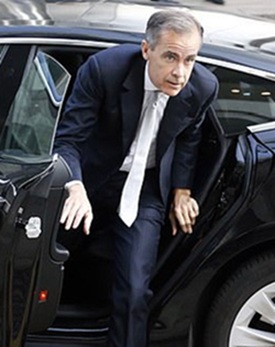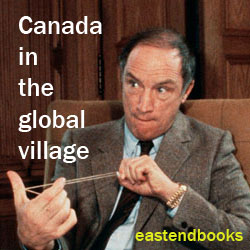Is Liberal PM Mark Carney in 2020s reviving at least one side of Liberal PM William Lyon Mackenzie King in 1920s, 1930s, and 1940s ??
Nov 21st, 2025 | By Randall White | Category: In BriefRANDALL WHITE. FERNWOOD PARK, TORONTO. FRIDAY, NOVEMBER 21, 2025. This past Monday Carleton Place, Ontario journalist David Krayden posted a Twitter/X piece on “Why was Mark Carney Booed at Canada’s Grey Cup?”
I have not myself delved into any TV or other footage that shows this booing taking place. I take the word of Mr Krayden and others that it did in some degree happen!
I am most persuaded myself by a response from my counterweights editors colleagues :
“And then there’s (maybe more relevant) history. No one, it has been said, ever admitted to voting for William Lyon Mackenzie King (who had a PhD from Harvard). And yet he remains by some distance the longest serving Canadian PM — 1921–1926, 1926–1930, 1935–1948.”
(1) Mackenzie King in the 1920s 1930s, and 1940s and Mark Carney in the 2020s (and 2030s and 2040s ??)
There are, it seems to me, a number of apt comparisons between PM Mackenzie King in the 1920s, 1930s, and 1940s, and PM Mark Carney in the 2020s.
I’m not entirely alone in this opinion. Last night on TV I heard Andrew Coyne raise the celebrated (if not quite exact) Mackenzie King quotation “conscription if necessary but not necessarily conscription,” to describe PM Carney’s recent political maneuvering (especially on oil pipelines).
Like Carney, Mackenzie King was well educated. He attended the University of Toronto and the University of Chicago, and finally earned a PhD from Harvard. There is also arguably some quite vague half-similarity between the family backgrounds of the two men.
William Lyon Mackenzie King was more famously the maternal grandson of William Lyon Mackenzie, first mayor of the modern City of Toronto and a key leader of the 1837 Rebellion in the old British North American province of Upper Canada (present-day Ontario).
PM Carney’s father, Robert Carney, was a school principal in the Northwest Territories, a Catholic education executive in Alberta, an education professor at the University of Alberta, and an unsuccessful Liberal candidate for Edmonton South in the 1980 federal election that saw Pierre Trudeau return to power in Ottawa.
In the 2020s the greatest blot on Mackenzie King’s career (not shared by Mark Carney) may well be his 1909 PhD thesis on “Oriental Immigration to Canada.” He was an old-school upper middle class white male of his time and place, and did not foresee (or understand and accept) the multicultural global migrations that would do so much to shape the Canada of the 21st century.
(2) The good, the bad, and the ugly in Mackenzie King’s Liberal Party of Canada
Ironically enough, the Liberal Party of Canada that Mackenzie King did so much to shape in the first half of the 20th century did, after the Second World War, go on to warmly embrace the multicultural global migrations that started seriously in the 1960s and began to put down deep roots in the 1980s and 1990s.
Under Mackenzie King’s successors as Liberal leaders (and Canadian prime ministers, starting especially with Lester Pearson and Pierre Trudeau and very much including Mark Carney today), Canadian Liberalism became a welcoming presence for new migrations from virtually every corner of Masrshall McLuhan’s global village.
In just one of many results, in Statistics Canada’s 2021 Census : “Aside from English and French, Mandarin and Punjabi were the country’s most widely spoken languages. 4.6 million Canadians (12.7%) speak a language other than English or French predominantly at home. Mandarin and Punjabi are spoken predominantly at home by more than half a million Canadians each … More than a hundred thousand people each speak Yue (Cantonese), Spanish, Arabic, Tagalog, Persian languages, Urdu, Russian and Korean at home.”

Mackenzie King’s more enduring connection to Canada today is what also connects him with current Canadian Liberal Prime Minister Mark Carney. Looking back from the 2020s at least, he can appear as someone with a deft and effective (if also infintely complex) understanding of the unique Canadian federal political culture, that finally accommodates the diverse linguistic and regional communities of modern ”northern North America” (Harold Innis).
Something of Mackenzie King’s complex and often subtle approach to bridging many if not all Canadian streams of division is arguably part of the legacy that PM Carney seems to be bringing to his work as a Canadian prime minister in challenging times.
The (apparently) Toronto Star editorial summary of the Mackenzie King message “conscription if necessary but not necessarily conscription” is one very short summary of the larger complex approach. The poet Frank Scott’s lines about how Mackenzie King “never let his on the one hand / Know what his on the other hand was doing” is another.
(3) Learning more about Mackenzie King (and Mark Carney)
There is now an almost vast specialist literature on Mackenzie King’s political and economic (if not not cultural and social) legacy to the Canadian scene that dominated his public and private life. In my old age I prefer two starting points from his own time and place.

The single best popular biographical introduction to Mackenzie King, I think, is still Bruce Hutchison’s The Incredible Canadian: A Candid Portrait of Mackenzie King, first published in 1952 in the immediate wake of King’s death in the summer of 1950. It was most recently republished in 2010, with an introduction by BC-based journalist Vaughn Palmer.
(Mr Hutchison himself was “educated in public schools in Victoria, British Columbia” and a subsequent editor of the Victoria Daily Times, and then editorial director of The Vancouver Sun. He also spent much time in Ottawa where he acquired first-hand impressions of the incredible Canadian : still an apt characterization in various senses, including “beyond belief”!)
The most striking account of King’s political talents in his time, I think, is the progressive historian Frank Underhill’s August 1948 tribute as PM Mackenzie King finally retired.
Underhill was a former King critic, who had helped write the first Canadian socialist party’s “Regina Manifesto” in the 1930s. By the late 1940s the progressive historian had acquired at least fresh respect for the talents shown in an unusually long democratic political career.
King’s “statesmanship,” Underhill wrote in the Canadian Forum, “has been a more subtly accurate, a more flexibly adjustable Gallup poll of Canadian public opinion than statisticians will ever be able to devise. He has been the representative Canadian, the typical Canadian, the essential Canadian, the ideal Canadian, the Canadian as he exists in the mind of God.”
(4) On the inherent mysticism of Canadian politics?
The cultural and social side of Mackenzie King’s Canadianism has now drifted away, as history does suggest it should. (Even if it remains in some current versions of right-wing conservative political thought.) The political and economic side has nonetheless hung on. And in more than a few ways it makes even more sense today that it did in the 1920s, 1930s, and 1940s.
With almost seven months of PM Mark Carney under our Canadian belts in the closing weeks of 2025 it does strike me that he is carrying on with a substantial chunk of Mackenzie King’s political and economic legacy. And on balance I think this has to be a good thing!

It is true as well, of course, that Mackenzie King had his more obviously bizarre personal sides, such as his consultations with female psychics in Canada and the United Kingdom, on both the wishes of his dead mother and various political problems in Ottawa.
(Or so it seems.)
PM Carney does not have such truly bizarre personal sides. Unlike Mackenzie King he is a married man with children.
But I wouldn’t be entirely surprised to learn that there is also a certain mysticism to at least some of Mark Carney’s views on Canadian politics. That too is part of what William Lyon Mackenzie King long ago called Canada’s “too much geography.”
